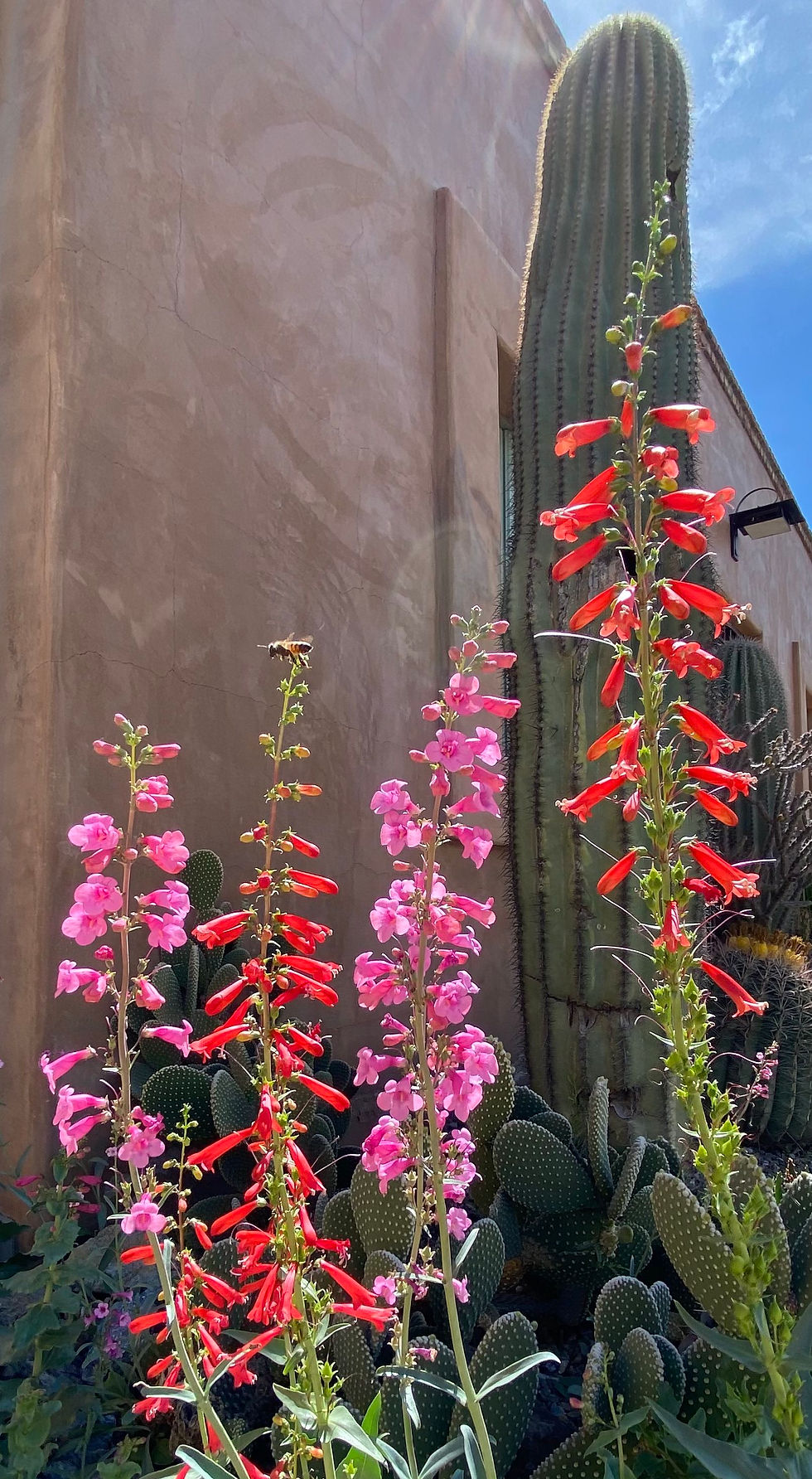After a few months of absence on my page, here I catch

up with you and I want to share this herbaceous plant that blooms every year here in Tucson and in various areas of the Sonoran Desert. The truth is I don't know how the penstemons are called in Mexico, if anyone knows write the name in the comments please! According to google, it’s called Lengua de barba, and according to the Arizona-Sonoran Desert Museum, it’s called Jarritos. But hey! these plants give beautiful flowers, they are ideal for pollinator gardens, and there are a lot of types of penstemons, here I will mention three of them.

In Arizona and part of Sonora we have the beautiful Penstemon parry. Its leaves are blue-green, and its flowers are pink. The plant can grow up to 3 ft in height and over time they release their seeds and expand. A characteristic of this type of penstemon is that here in Arizona it "sleeps" in the summer (it likes the cold) and it is recommended that the flowers be pruned once they have dried. When the flowers dry, they get the shape of a little ball that contains many seeds; you can save them and wait to scattered them in the fall so that in spring they will bloom and cover your entire yard. In their natural habitat, penstemons are generally found on rocky and/or sandy plains, blooming in spring and early summer, and “resting” in late summer and fall.
Another type of penstemon is Penstemon eatonii, here in Arizona they call it Firecracker Penstemon. Very similar to Penstemon parryi, but this type has red flowers instead of pink. They can grow up to 2 ft tall and can also be found in rocky terrain and streams.
In the Baja California peninsula we have an endemic species: Penstemon eximius. It is found in the rocky and sandy areas of the streams, particularly in the north of the peninsula near the Sierra de San Pedro Mártir and in the center of the peninsula, by Cataviña and its surroundings. Its flowers are white with lilac, and its leaves are radiant green. They can reach up to almost 6ft high.
There are many more types of Penstemons in the Sonoran Desert, some endemic to specific areas. If you want to have hummingbirds, butterflies, bees, colors and life in your garden, penstemons are the #1 option to achieve an astonishing garden.

Type: Herbaceus perennial, some are dormant during late summer to winter.
Size: From 1ft to 6ft, depending on the type of penstemon.
Water use: They need water to germinate and establish themselves. They do not need watering once established.
Flower season: At the end of winter, spring and some flowers make it to summer.
Flowers: They are found in different colors such as red, white, pink, white with lilac, orange and purple.
Food for: Pollinators love these plants, you will fill your garden with hummingbirds, native bees and butterflies.
Where to plant: Direct sun or in partial shade.
Distribution: They are found in and out of the Sonoran Desert. Europeans became obsessed with these plants and have created many hybrids.
Ancestral use: I did not find information on its ancestral use and history, if anyone knows, please share!
Landscape design: Penstemons look beautiful in bunches, but can also be mixed with other plants such as native grasses and Globe mallow (Sphaeralcea ambigua), and ground covers like Dalea greggii. This combination of plants will look even more beautiful if they are placed in basins or depressions where rainwater is collected.
Sources:
Books:
Baja California Plant Field Guide 3rd Edition, Norman C. Roberts and J. Rebman.
Native Plants for Southwestern Landscapes by Judy Mielke.
Web:
- www.desertmuseum.org/visit/sheets/Penpar.pdf









